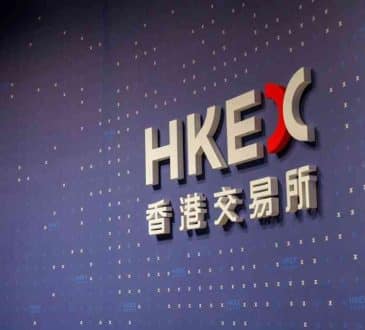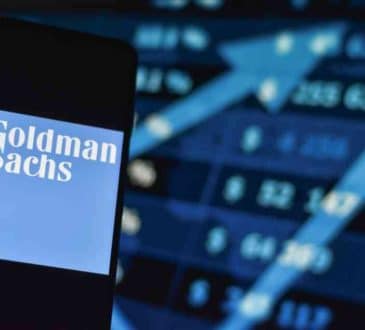Rebalancing for tomorrow: Reflections on the outlook ahead and how businesses should prepare for it

As the old joke runs, “it’s difficult to make predictions, especially about the future.” That said, the ability to help clients anticipate the future, embrace new opportunities and transform their operations has always been a central part of Arthur D. Little’s consulting philosophy.
It’s fitting then that, as we celebrate our 135th anniversary, we should reflect on where the business world is today and identify some important priorities for the future.
The times, they are a-changin’
The last few years have seen some of the biggest global shocks since the crash of 2008 – even, arguably, since the Second World War. It has been a time in which previous long-held certainties and assumptions about the world have been shaken and, in some cases, shattered. Globalization has been a huge driver of growth and development, and was previously seen as a force for good by both governments and society at large. Yet, it is now under attack from several quarters. In developed economies, globalization is regarded by some as a cause of inequality, concentrating wealth in the hands of a minority elite and giving rise to a handful of hugely powerful global companies.
In the West, especially, increasing international labor mobility on top of industrial decline has fueled the rise of populism and protectionism. Geopolitical changes are upsetting the established world order. Perhaps most importantly, climate change and sustainability, for too long the “elephant in the room”, are finally being acknowledged as an urgent challenge as the reality of previous predictions starts to bite. For the first time, issues around environmental and social impacts and resource usage are taking center stage.
Doing more good
The notion that companies have responsibilities beyond delivering goods and generating profits goes back to the earliest days of the industrial revolution. For example, the Quaker chocolate factory owner George Cadbury built the village of Bourneville to improve the social welfare of his workers in the early 1880s, around the time that Arthur Dehon Little founded ADL. Fast-forward to the 21st century, and companies are only just starting to consider social and environmental responsibilities central to their business, rather than something to be managed as a consequence of it.
There are several drivers for this change, all of which we expect to endure over the coming years¹. Firstly, positive government support for a sustainable infrastructure is increasing, e.g., the USD 2 trillion infrastructure plan, the EU Green Deal Recovery Plan, and China’s latest Five Year Plan. Secondly, the availability of green investment funding has greatly accelerated². For example, BlackRock, the world’s biggest fund manager with USD 7 trillion in assets, stated in early 2020 that it intended to “place sustainability at the center of its investment approach”. There is huge pressure from stakeholders for financial institutions to improve their environmental and social governance (ESG) capabilities. Thirdly, technological advances in areas such as solar, EV/batteries, waste recycling, air/water treatment and hydrogen have reduced costs and enabled deployment at scale, making business cases more viable. Behind all this is a growing public and consumer awareness of the urgency of new action on sustainability and social responsibility, with younger generations, especially, leading the call for change.
Looking ahead, businesses will increasingly need to place ESG issues at the heart of their strategies. This means not only avoiding any adverse impacts of business operations along the entire supply chain, but also innovating to seek out new opportunities and business models. There is much scope for innovation and growth across every aspect of ESG, from climate change mitigation and adaptation through to the circular economy, resource efficiency, material substitution, traceability and the customer interface, to name just a few.
To be sustainable in the longer term, companies need to adopt a mind-set that aims to do good for people and society at large, while still benefiting shareholders, customers and employees. Those businesses that are ahead of the game on fundamentally realigning around ESG – rather than treating it as a peripheral function – are likely to reap the benefits in the years ahead.
The willow versus the oak
Going forward, companies need to move from an essentially static, backward-looking risk management approach that over-simplifies complexity, to one which is dynamic, responsive and forward-looking. In such an approach, customized key risk indicators are calibrated to provide an early “red flag” prior to risks occurring, and risk control priorities are constantly retuned based on monitoring intelligence. Such approaches are already being turned from theory into reality through the power of new machine learning (ML) and artificial intelligence (AI) tools, which can constantly crunch the necessary data to generate insights and support real-time decision-making³.
Another key aspect of resilience is “anti-fragility”, a term coined by Nassim Taleb to describe things that not only gain from chaos, but may need it to survive and flourish. Businesses in the coming years will increasingly need to adopt the characteristics of anti-fragility to thrive.
First, companies will need to be very clear about their sense of purpose and their raison d’etre. In an environment of rapid change and disruption, being defined by the products you make or the services you provide is no longer possible, because next year or even next week they may no longer be required. By the same token, products or services disregarded as niche and unimportant today can suddenly grow explosively. Having a clear sense of purpose – while accepting uncertainty and complexity – frees up strategy to move beyond existing core products and services, and provides customers and employees with an enduring reason to stay connected with the company⁴. This is important for both now and the future, particularly in the context of “doing more good” in the world.
Second, companies will need to further develop their capabilities in routinely identifying possibilities for disruption and innovating to find new ways of creating customer value. This requires more than just setting up an internal radical innovation team or a start-up incubator. It means establishing a full end-to-end growth capability to develop, commercialize and integrate new businesses that are genuine step-outs from the core, building on excellent foresight and customer intelligence to bring to life the sense of purpose. What’s more, it requires companies to be “ambidextrous” in their organizational approach, being efficient and productive in operating scaled-up businesses at the same time as being agile and creative.
With a little help from our friends
Looking ahead, it will also be increasingly important for companies to excel at developing and nurturing an extensive and complex ecosystem of partners and collaborators. They enable flexibility and improve agility to respond to disruptions. And thanks to effective digital tools for communication and collaboration, developing complex partner networks that operate over global distances is now relatively easy. The company of tomorrow may go even further to be defined only by its capabilities and brand presence – decoupling these from its business functions which are run entirely by the partner network⁵.
With their international expertise and dependence on partnerships for success, global companies have the potential to play a vital role in mitigating the worst effects of national and regional protectionism. They can maintain global collaborations, spread technological innovations and help to maintain the supply of goods and services demanded by customers. In so doing, they can also help to strengthen international ties and rebuild mutual trust from the ground upwards.
However, to do this, big business must itself rebuild trust from the public at large, some of whom consider it to be one of the causes of the social and environmental problems we see today. In the years ahead, businesses will need to do much more to address these concerns. Local and community support and engagement will be increasingly important in key areas such as food, health, energy and services. Companies with a significant impact on the daily lives of consumers – for example, the digital giants – will need to do much more to recognize and respond to societal concerns.
Moving on up
Today, the future seems more uncertain and unpredictable than ever. To be successful in this future, businesses need to embrace this uncertainty, driven by a genuine and compelling sense of purpose. We have big challenges ahead, but irrespective of the politics, it is ultimately technology, and the existence of robust businesses to deploy it, that will be the key to safeguarding our future.
Written by Rick Eagar.
1. Refer also to “Corporate Sustainability – Using your ecosystem to sustain the ecosystem” [Prism S2 2021]
2. Refer also to “The Green Gambit – Investing for corporate strategic advantage in the post-COVID-19 world” [Prism S1 2021]
3. Refer also to “Risk: Strengthening business resilience after COVID-19” [Prism S2 2020]
4. Refer also to “The CEO – Lost in space and time?” [Prism S2 2018]
5. Refer also to “How to enable the company of tomorrow” [Prism S1 2020]
Have you read?
# Best Citizenship and Residency by Investment Programs.
# Richest People in New York and Their Net Worth, 2022.
# The World’s Top 10 CEOs Over 70 Years Old.
# These are the world’s most and least powerful passports, 2022.
# Case Study: LVMH’s Bernard Arnault, Apple’s Tim Cook, and Elon Musk.
Add CEOWORLD magazine to your Google News feed.
Follow CEOWORLD magazine headlines on: Google News, LinkedIn, Twitter, and Facebook.
This report/news/ranking/statistics has been prepared only for general guidance on matters of interest and does not constitute professional advice. You should not act upon the information contained in this publication without obtaining specific professional advice. No representation or warranty (express or implied) is given as to the accuracy or completeness of the information contained in this publication, and, to the extent permitted by law, CEOWORLD magazine does not accept or assume any liability, responsibility or duty of care for any consequences of you or anyone else acting, or refraining to act, in reliance on the information contained in this publication or for any decision based on it.
Copyright 2024 The CEOWORLD magazine. All rights reserved. This material (and any extract from it) must not be copied, redistributed or placed on any website, without CEOWORLD magazine' prior written consent. For media queries, please contact: info@ceoworld.biz
SUBSCRIBE NEWSLETTER








